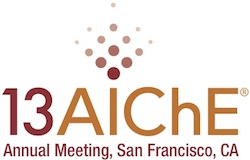

Just one decade ago , the term “ionic liquid” was unknown to the majority of chemical engineers. Today , this unique family of substances is being investigated so intensely that over four-thousand journal articles are being published on ionic liquids in a period of just one year. One of the areas that have attracted great research interest is the system of CO2 and an ionic liquid (IL). A Scopus search on the combination of words “ionic liquid” and “carbon dioxide” leads to 250 results for the year 2012. Potential applications involving such systems include CO2 absorptions and separations by ionic liquids. Due to their importance in the design of such processes , numerous publications have appeared , and are continuing to do so , on the phase behavior of CO2 + ionic liquid systems. However , the number of articles that present the solubility of carbon monoxide (CO) in ILs is an order of magnitude less than the corresponding papers on CO2. While the solubility of CO in ILs is not as high as that of CO2 , it is still significant enough to deserve further investigation. Potential applications include , for example , IL-enhanced reactions involving CO , or gas purifications with ILs. Flue gas , in particular , consists mainly of N2 , CO , H2 , CO2 , SO2 , and N2O. With environmental laws becoming increasingly strict , the purification of gas effluents is gaining even more urgency. In this respect , various routes have been investigated. One potential path that can be investigated regarding its feasibility , is the separation of flue gas pollutants such as CO , CO2 , SO2 , N2O , and CH4 by ionic liquids , for example , in the form of supported ionic liquid membranes. In this respect , this study investigates the high-pressure solubility of CO in 1-butyl-3-methylimidazolium bis(trifuoromethylsulfonyl)amide ([bmim][Tf2N]) up to temperatures and pressures of 460 K and 10 MPa , respectively , using a synthetic method. The results obtained show that the extent of solubility of CO in this ionic liquid is not great. For example , the single gas solubility of CO at 323 K and 2 MPa is about 0.02 in mole fraction , while the corresponding values for CO2 , N2O , and CH4 at the same temperature and pressure are 0.3 , 0.3 , and 0.04 , respectively. A very rough estimate indicates that at 323 K and 2 MPa , the ratios of single-gas equilibrium molar concentrations in [bmim][Tf2N] of carbon dioxide to nitrogen is roughly CO2/N2≈17 , and the corresponding values for other gases are: SO2/N2>>17 , N2O/N2≈17 , CO/N2≈1 , CH4/N2≈2. The solubilities of the different gases are higher at higher pressures , much more so for the highly soluble gases such as SO2 , N2O , and CO2 and much less for the low-soluble gases such as N2 and O2. Therefore , flue gas purifications can be more efficient at higher pressures. Since the above estimates indicate single-gas solubility differences of up to one order of magnitude with one another , it should be possible , at least from a thermodynamic point of view , to absorb some of the impurities of flue gases in this ionic liquid in order to separate them from N2 and O2 , before flue gas is vented into the atmosphere. However , if one focuses on CO capture alone , the results of this study may seem discouraging at a first glance. Although CO was shown to dissolve better in [bmim][Tf2N] than in most conventional organic solvents , it still does not have the high solubility that is desired in order to achieve easy and cheap separations. However , if one focuses on the common liquid absorbents that have been investigated for CO separations , it is seen that they are not capable to simultaneously remove other impurities from flue gas. On the other hand , ionic liquids are very good absorbents for CO2 , SO2 , and NOx. Organic solvents are simply not good solvents for volatile gases such as CO , therefore to increase the solubility in a liquid , researchers have mainly focused on absorbents which form complexes with CO. Examples include COSORB , ammoniacal copper liquor , Fe(TIM) , palladium complex , and selenium and secondary amine. However , such complex-forming absorbents do not make complexes with other flue gas pollutants. For example , in the COSORB process CO2 and CH4 are chemically inert to the solvent , CO2 does not react with the Fe(TIM) solvent , the palladium complex is good for separating CO2 and CH4 from CO , and the selenium and secondary amine system can be used to separate CH4 from CO. Therefore , using such absorbents for CO removal would require additional separation units in order to remove the other impurities of flue gases. But ILs can simultaneously dissolve many gases , and additionally , since gas solubility in an IL is a purely physical process with no chemical interactions involved , the ILs can be cheaply and very easily regenerated by pressure drop or temperature increase. One further advantage of ILs , compared to other liquid absorbents , is that upon regeneration , the separated gases are not polluted with the solvent , because an ionic liquid has insignificant vapour pressure. Because of all these considerations , flue gas purifications with ionic liquids deserve further investigations. However , it is suggested that future investigations should consider mixed gases and real flue gases instead , since the presence of other solutes in an IL have been shown to increase/decrease the extent of solubilities compared to their corresponding binary-pair values , i.e. , to show cosolvency or antisolvency effects.
